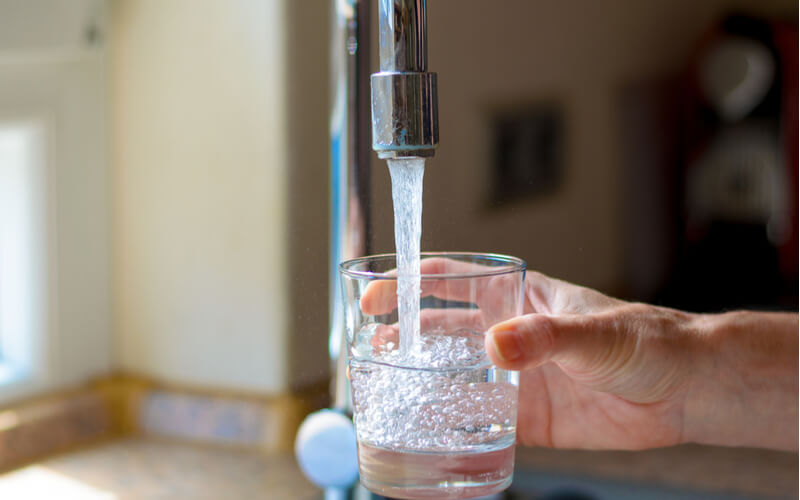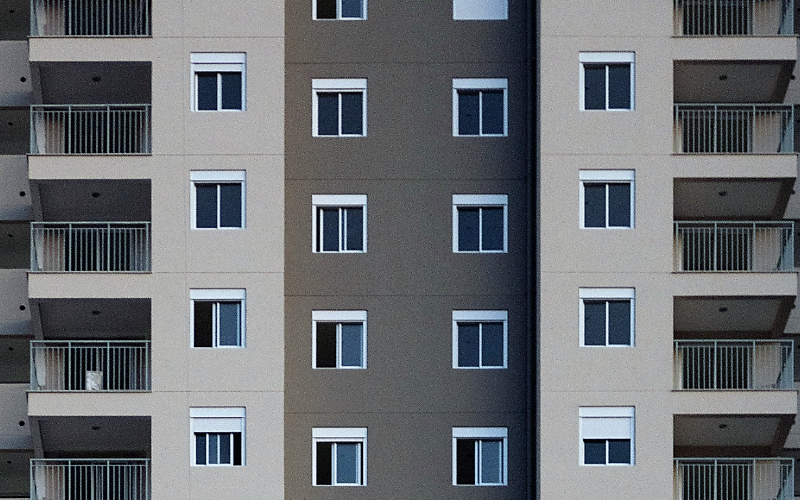Water safety and hygiene - legionelia
This guide covers social landlords’ responsibilities for reducing the risk of legionella contamination and maintaining safe hot and cold water systems.

Water safety and hygiene - legionella – Q&A briefing (updated November 2020)
Q. How does Water safety and hygiene - legionella relate to the new Building Safety Bill?
Water safety and hygiene - legionella is one of the factors that will need to be taken into account when developing the Building Safety case for each higher-risk building under the proposals in the Building Safety Bill. This will involve landlords assessing the risks from water hygiene and legionella for each higher-risk building as well as ensuring compliance across all its stock for water safety and hygiene - legionella.
Q. What should social landlords do?
They should:
- appoint Building Safety Managers for each higher-risk building
- ensure that they have systems that will record the risks from water hygiene and legionella and keep these risks updated for each higher-risk building as well as having systems to record compliance for water hygiene and legionella across all their stock.
Q. Where can social landlords find more information on the Building Safety Bill?
The NHMF Best Practice website has detailed Q&A briefing on the Building Safety Bill.
Legislation and statutory requirements
Landlords are responsible for ensuring that the risk of exposure to legionella in residential premises is properly assessed and controlled. All water systems require an assessment of the risk which landlords can carry out themselves, if they are competent, or employ somebody who is. They are also required to ensure drinking water is not contaminated or wasted and have a duty to reduce the risks of scalding, particularly for vulnerable residents.
Duties under the Health and Safety at Work etc Act 1974 (HSWA) extend to risks from legionella bacteria, which may arise from work activities. The Management of Health and Safety at Work Regulations 1999 and Management of Health and Safety at Work Regulations (Northern Ireland) 2000 provide a broad framework for controlling health and safety at work. More specifically, the Control of Substances Hazardous to Health Regulations 2002 (COSHH) provide a framework of actions designed to assess, prevent or control the risk from bacteria like legionella and take suitable precautions.
The Water Supply (Water Fittings) Regulations 1999 and Scottish Water Byelaws set legal requirements for the design, installation, operation and maintenance of plumbing systems, water fittings and water-using appliances. They are intended to protect public health, safeguard water supplies and promote efficient use of water across the UK. They have a specific purpose to prevent misuse, waste, undue consumption or erroneous measurement of water and, most importantly, to prevent contamination of drinking water. The Water Supply (Water Quality) Regulations 2010 set out the requirements for water used for domestic purposes.
In England and Wales, the Housing Act 2004 applies to individual homes, including the licensing of houses in multiple-occupation (HMO) and other residential accommodation. Water safety risks are assessed through the Housing Health and Safety Rating System (HHSRS).
The relevant legislation in Scotland is the Housing (Scotland) Act 2014 and for Northern Ireland, the main legislation is the Housing (Northern Ireland) Order 1981, with all relevant legislation listed by the Department for Social Development.
Enforcement
HSE enforces the control of legionella while water companies enforce the water fittings regulations and the Drinking Water Inspectorate enforces the water quality regulations. Separate enforcement arrangements operate in Northern Ireland, which has its own hseni.
The HHSRS under the Housing Act is enforced by local authorities, for category 1 hazards an improvement notice will be served or, in more extreme cases, a prohibition order may be served. The Act gives local authorities powers of access for the purposes of inspecting to see if a category 1 or 2 hazard exists.
Housing regulators
In England, the Regulator of Social Housing (RSH), requires registered providers to comply with its Regulatory Standards. On 1 October 2018 the RSH became a standalone public body, independent from the Homes and Communities Agency (HCA). On 11 January 2018, the HCA’s non-regulation arm adopted its new trading name Homes England. Managing water safety and hygiene is covered by the Home Standard that requires meeting all statutory requirements for the health and safety of occupants.
In Wales, all social landlords are required to meet and maintain the Welsh Housing Quality Standard (WHQS) as soon as possible, but in any event no later than 2020. There are no specific requirements on water safety.
In Scotland, social landlords are required to meet the minimum Scottish Housing Quality Standard (SHQS) by 2015. Meeting the SHQS includes compliance with Technical Guide for healthy, safe and secure homes including the control of legionella. The Scottish Housing Regulator expects compliance with all statutory and regulatory obligations including water safety.
IIn Northern Ireland the Department for Social Development regulates registered housing associations under the Regulatory Framework for Registered Housing Associations in Northern Ireland 2006. Regulatory Standard 3.3 states that housing associations must develop, manage and maintain good-quality homes that seek to meet people’s needs and preferences now and in the future. This includes meeting the Decent Homes Standard.
Compliance – good and efficient practice
Guidance on landlord’s responsibilities is available from the Health and Safety Executive (HSE), including Legionnaires' disease: The control of legionella bacteria in water systems – Approved Code of Practice and guidance and HSG274 Part 2. It also advises on the controlling legionella in different types of hot and cold water systems and assessing the risks of scalding. Temperature control is the traditional strategy for reducing the risk of legionella in hot and cold water systems. Cold water systems should be maintained, where possible, at a temperature below 20°C. Hot water should be stored at least at 60°C and distributed so that it reaches a temperature of 50°C (55°C in healthcare premises) within one minute at the outlets. However, such temperatures can pose a risk of scalding.
HSE guidance explains that landlords implementing simple control measures in hot and cold water systems can help control the risk of exposure to legionella. For example:
-
Flushing out the system prior to letting the property
-
Avoiding debris getting into the system (e.g. ensure any cold water tanks, where installed, have a tight fitting lid)
-
Setting control parameters (e.g. setting the temperature of the hot water cylinder or calorifier to ensure water is stored at 60°C)
-
Making sure any redundant pipework identified is removed
-
Advising tenants to regularly clean and disinfect showerheads.
HSE explain that tenants should be advised of any control measures put in place that should be maintained e.g. not to adjust the temperature setting of the hot water cylinder or calorifier, to regularly clean showerheads and to inform the landlord if the hot water is not heating properly or there are any other problems with the system so that appropriate action can be taken.
Where Thermostatic Mixing Valves (TMVs) are installed, they should be maintained in accordance with:
-
NHS Estates Health Guidance Note – ‘SAFE’ hot water and surface temperatures
-
Thermostatic Mixing Valve Manufacturer’s Association Recommended Code of Practice for Safe Water Temperatures
-
HSE document L8: Legionnaires' disease. The control of legionella bacteria in water systems: Approved Code of Practice and guidance
-
The Water Supply (Water Fittings) regulations
-
WRAS Water Regulations Guide
-
BS EN1287 1999 "Sanitary tap ware – low pressure thermostatic mixing valves"
-
BS 7942: 2011 Thermostatic Valves for use in care establishments
Where water treatment equipment is installed, it should be maintained in accordance with:
-
BS 7671:2008+A3:2015 Requirements for Electrical Installations
-
BS EN 806 Specifications for installations inside buildings conveying water for human consumption. Part 1:2000 General, Part 2:2005 Design, Part 3:2006 Pipe sizing – Simplified method, Part 4:2010 Installation and Part 5:2012 Operation and maintenance
-
BS 8558:2011 Guide to the design, installation, testing and maintenance of services supplying water for domestic use within buildings and their curtilages. Complementary guidance to BS EN 806
-
HSE L8 The Control of legionella bacteria in water systems
-
Water Supply (Water Fittings) Regulations 1999
-
WRAS Water Regulations Guide
-
CIBSE Guide B4 Water Service Systems


